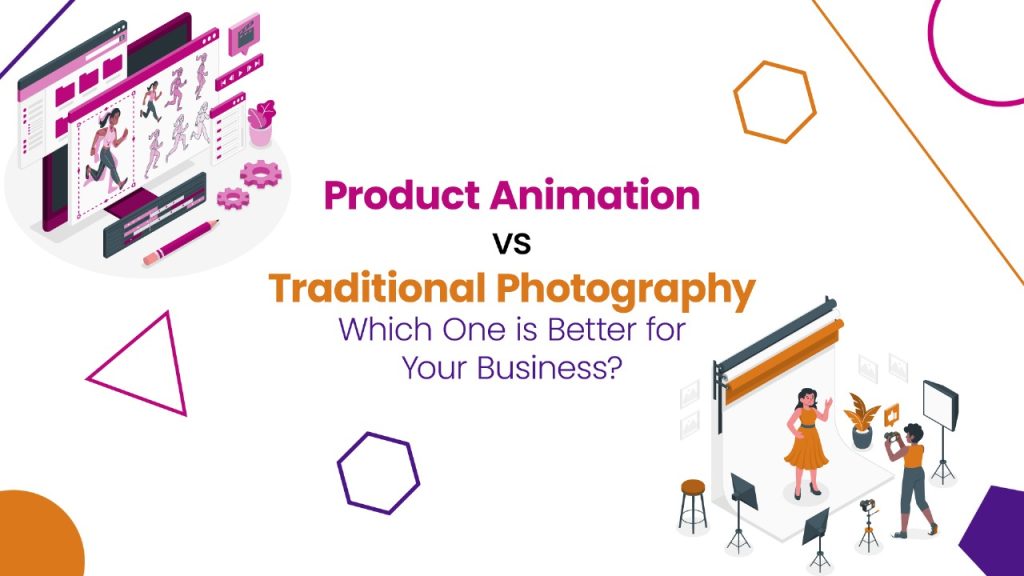We’ve all been introduced to fantasy worlds through movies and television that aren’t possible to experience on Earth. Even if you don’t usually like the fantasy genre, you probably have seen these visual effects in action movies, ads, or even video games.
VFX holds the solution. VFX is essential to contemporary filmmaking, whether it is for adding digital magic to real-world effects or employing computer-generated imagery (CGI) to build new universes. But how do they manage it? We’ll go into the VFX industry in this post and examine the methods and equipment used to bring the magic of cinema to life. Without further discussion, let’s begin to know what VFX is in animation.
What Is VFX?
Visual effects (VFX) is a term to define visually created, altered, or augmented images or videos for any movie or other moving medium that doesn’t occur during live-action shooting. To create realistic-looking situations for the context, VFX frequently requires the blending of genuine footage with altered images. These scenes have either been developed in worlds that don’t exist or are too unsafe to shoot in. To make it happen, they employ specialized VFX software and computer-generated imagery (CGI). To decide whether scenes need to be shot with green screens, VFX producers consult with directors and cinematographers.
Visual special effects, sometimes known as SFX, are created and applied after filming; visual effects are distinct from special effects. They include things like planned and controlled explosions, fabricated gunshots and wounds, etc. Some examples of visual effects are flying dragons in Game of Thrones and the spaceship in Star Wars.
Types of VFX Techniques
If you want to break into the VFX industry, some popular types of VFX are listed below, so let’s start discussing.
· CGI

Computer-generated imagery (CGI), one of the most widely used visual effects (VFX) techniques, has fundamentally transformed the movie business. CGI is a technique that makes use of 3D modeling software to create digital graphics that can be seamlessly incorporated into a live-action film. Characters, creatures, places, and vehicles are all examples of CGI. CGI allows filmmakers to create entire worlds that would be challenging to capture with cameras alone, in addition to altering the appearance of people or things after post-production.
· Match Moving
The VFX industry uses a technique called “match moving“ in filmmaking that involves tracking and calibrating live video frame transitions in order to include them in computer-generated imagery (CGI). Basically, you’re attempting to replicate the movement of a camera in real life on computer-generated imagery. As a match movement artist, your job will be to incorporate live camera views into a 3D scene seamlessly.
· Rotoscoping
The animation process of rotoscoping, sometimes referred to as “roto,” involves tracing over live-action video frame by frame to create visual elements for both animated and live-action projects. Tracing live-action videos accelerates the animation process, rather than having to create everything by hand. Thanks to this approach for creating complex animation sequences and characters, filmmakers can also add features to live-action movies that they might not have been able to.
· Rigging

In skeletal animation, rigging is a technique that gives a model more control. It establishes the range of motion for a character or object to specify its actions, gestures, and movement, which is also known as tweening animation. The 3D model is given a set of interconnecting bones so that you can move and reposition the static image in any way you like.
· 3D Modeling

A commonly used technology in VFX known as 3D modeling enables the creation of 3D animation, graphics, and models for use in the entertainment industry. By creating and manipulating items, 3D modeling can produce realistic effects and settings. It is an effective method that gives media, like video games, television shows, and movies, more reality.
· Matte Painting

Matte painting is a method that has been used in the film business for over a century. Compositing is the process of overlaying live-action video over a painted background that simulates a flat surface, such as a glass panel. Even today, matte paintings are used in movies to depict everything from enormous vistas to dystopian cities.
· Compositing
The process of combining various shots into a single fluid video is referred to as compositing. In visual effect video, this technique is widely used to combine real-world and computer-generated imagery realistically. Extensive sets, altered lighting, and the addition or removal of scenes can all be achieved using compositing.
· Motion Capture

Motion capture records the actions and converts them into information that animation tools can use to apply to a 3D rig or character. Motion capture projects don’t necessarily require a large budget or an entire production crew, despite what many people believe. Even your smartphone may be used to perform simple motion capture, thanks to advanced technology.
What Is the Difference Between VFX and Special Effects?
Visual effects and special effects are commonly confused as similar, yet they are both different. While there are few similar subcategories, special effects are frequently realistic, which means they are manufactured on location (for instance, a controlled explosion in an action sequence). On the other side, visual effects are made in the editing room or during post-production. Modern visual effects deal with animation, computer-generated imagery (CGI), and other post-production effects.
The majority of special effects, including fireworks, explosions, prosthetic makeup, and animatronics, are physically constructed on location. It requires skilled technicians and artists to execute these effects safely and effectively because they are frequently shot live on-site.
On the other hand, visual effects are more adaptable and can generate effects that are practically impossible to replicate on set. However, these techniques are used to enhance a movie or television show’s plot and provide optical illusions. Additionally, post-production tweaking and polishing of visual effects gives directors more freedom to execute their ideas.
2023’s Best VFX Software Picks for Beginners
So far, you know what VFX is and its types. Now, let’s start discussing the software used by beginners and animation studios as well.
1. After Effects
Because it’s so well-known and has a ton of tools to get you started, Adobe After Effects is one fantastic VFX program. It works incredibly well for green screen and motion capture animation and can serve as a starting point for 2D and 3D animation graphics.
2. HitFilm
Check out this free VFX software if you’re starting and don’t want to be a full-time VFX artist. For instance, Hitfilm offers free editing software of high caliber with an easy-to-use interface, a large selection of stock visual effects, and online tutorials to help users get started.
3. Blender
Blender is a complete 3D creation software for Windows, Mac, and Linux that is made available for free as an open-source project. With its excellent modeling, digital sculpting, animation, rigging, and rendering skills, Blender is one of the best VFX software for both experienced artists and moviemakers.
3 Famous Examples of VFX in Movies
The incredible visuals you see in movies are produced using CGI by artists, producers, and editors during post-production. In higher-budget movies, this has become more frequent. Let’s have a look at the three famous VFX examples in movies.
1. Jurassic Park (1993)

Jurassic Park, a film by Steven Spielberg, brought extinct dinosaurs back to life. Animated puppets and computer-generated imagery are both used in the movie. It smoothly combines digital artistry with workable substitutes. One of the most recognizable scenes in movie history is undoubtedly the Tyrannosaurus paddock scenario.
2. War for the Planet of the Apes

War for the Planet of the Apes is the third and last film of the Planet of the Apes reboot trilogy. The graphics of the franchise have long been well-known. In the reboots, this one is more accurate in terms of graphics. This movie is much liked among viewers due to the best combination of motion capture and CGI works, which made the apes convincingly human, not simply realistic.
3. Dead Man’s Chest Is a Gold-Standard
Dead Man’s Chest, directed by Gore Verbinski, is the second overall entry in the Pirates of the Caribbean series and a direct sequel to 2003’s The Curse of the Black Pearl. Davy Jones, a CGI villain, is introduced in this movie, which enhances the undead pirates’ stunning visual appeal in Curse of the Black Pearl.
How Anideos Help People Tell Better Stories?
You probably feel motivated to make your CGI-animated video after looking at the top VFX animation examples in movies. Unable to create on your own? Don’t be stressed, though. Anideos is equipped with the experts and know-how to help you build a fascinating CGI animation style from the ground up. What makes you wait, then? Leverage our top-notch motion graphics services to transform your thoughts into captivating visual stories.










